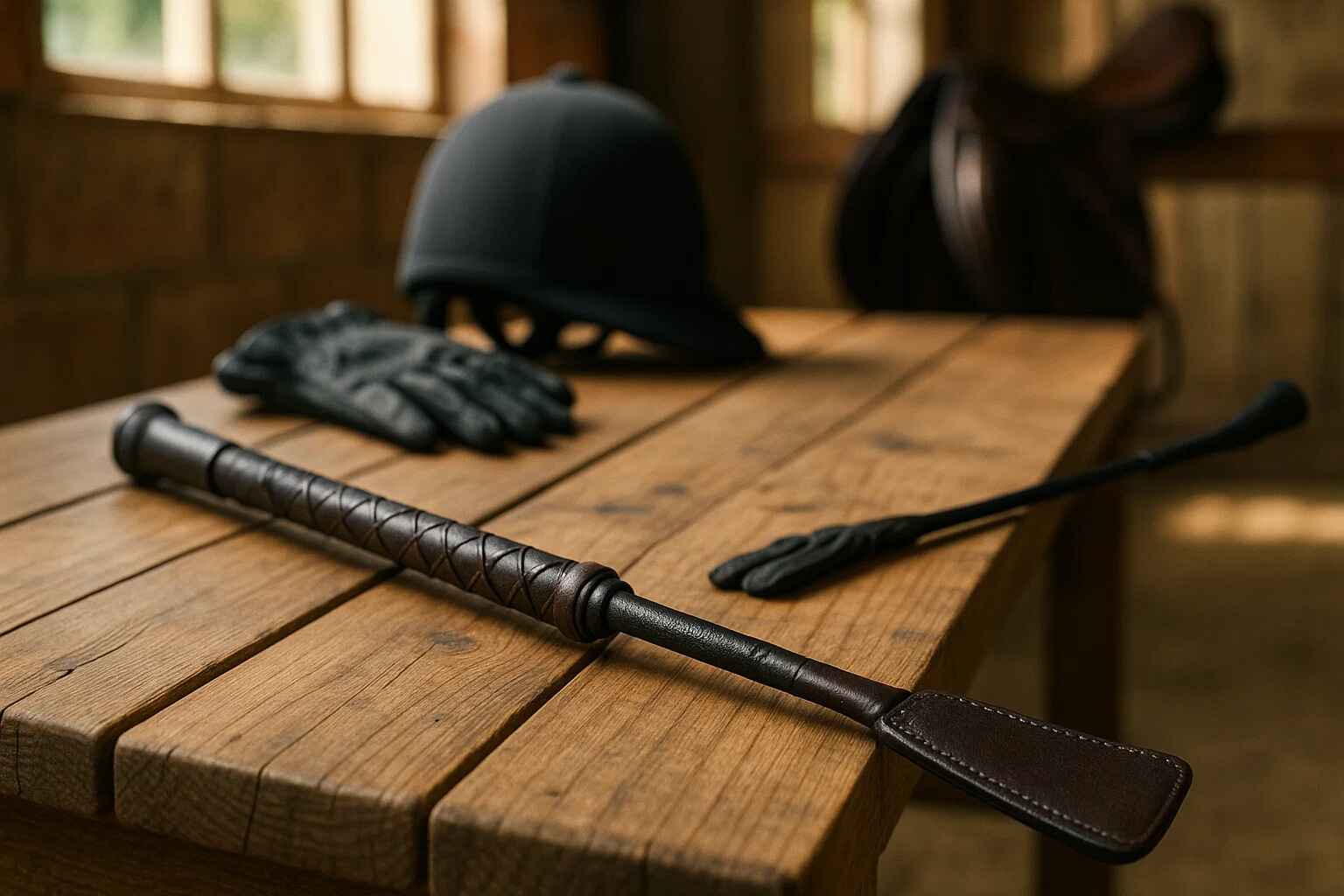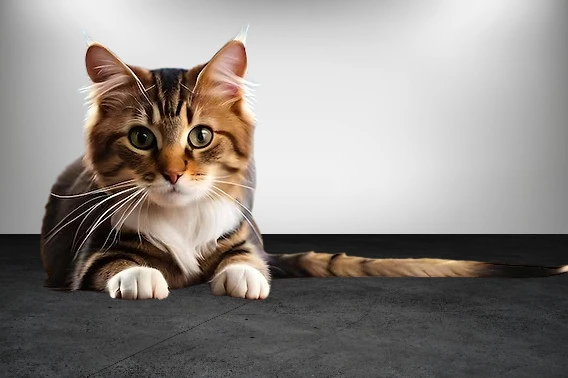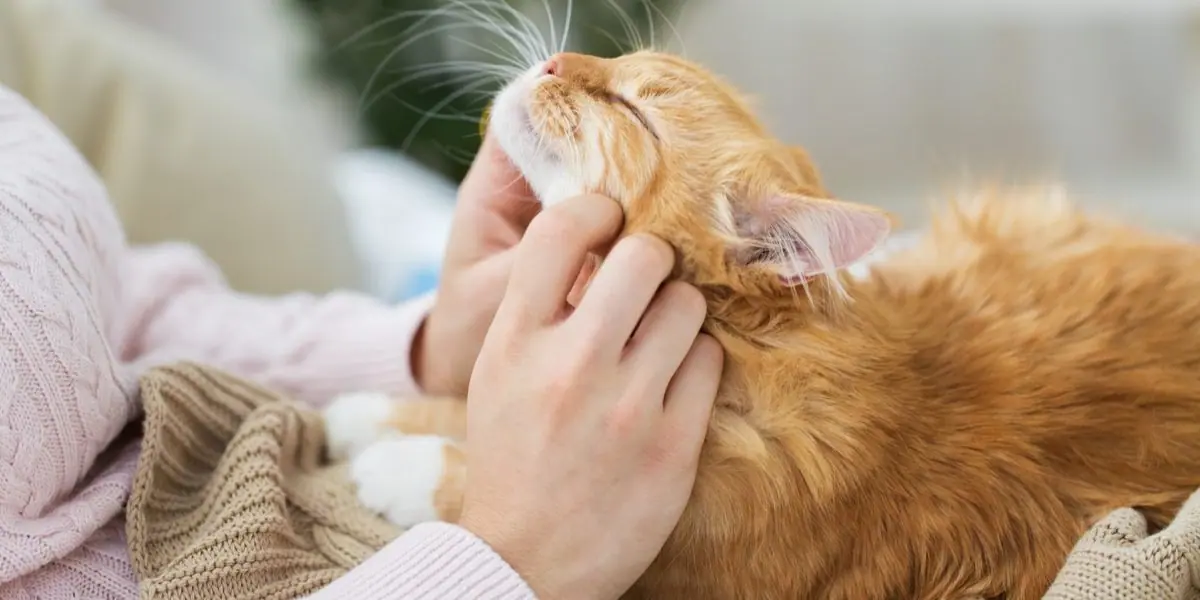Pet
How Boarding Provides for Your Dog’s Safety and Well-Being

Dog boarding facilities support your pet’s safety and well-being through supervision, structured care, socialization, and enrichment. Your dog enjoys a comfortable space to relax. These areas are designed to feel familiar and welcoming. Here are a few ways in which boarding provides for your dog’s safety and well-being:
Structured Daily Care
Boarding facilities provide consistent schedules for care, including feeding, walks, and rest periods. These routines help dogs adjust to a new environment. Sleeping areas offer comfort and separation when needed, supporting calm behavior throughout the day. Structured care during dog boarding helps dogs settle while away from home.
Supervised playgroups allow dogs to interact with one another safely. Staff monitor these sessions to maintain positive engagement. Dogs can expend energy and engage in mental stimulation within a controlled setting. Playtime encourages social interaction and supports overall well-being.
Professional Grooming Services
Including professional grooming services helps maintain a dog’s coat and overall cleanliness. End-of-stay care leaves dogs clean after eating, playing, and resting. Brushing keeps coats tidy and manages shedding. Nail trimming and ear cleaning support comfort during their stay, and attention to these needs promotes a pleasant boarding experience.
Daily routines at boarding facilities provide structure and predictability, offering a consistent environment. Dogs spend time eating, exercising, playing, or preparing for rest throughout the day. Regular schedules make transitions smoother when returning home. Designated eating and rest areas offer consistent spaces for dogs in new surroundings.
Combining grooming with structured routines supports a well-rounded boarding experience. Scheduled activities encourage movement and engagement, while grooming keeps dogs clean and comfortable. Dogs have spaces for rest, meals, and play throughout the day. These practices help dogs feel settled and cared for while away from home.
Kennel-Free Accommodations
Kennel-free boarding in the centers provides comfortable accommodations. Dogs stay in rooms or suites instead of cages or pens. Sleeping areas replicate home environments for rest, and playrooms provide a space for supervised activity to support movement. With space to walk, play, eat, rest, and interact, these kennel-free setups offer opportunities for canine care during boarding.
Boarding programs also include activities that engage dogs physically and mentally. Daycare adjusts play to energy levels and individual preferences. Puzzle toys encourage problem-solving, while agility courses provide exercise and skill-building. Group interactions add social engagement, and quiet periods allow dogs time to recharge between activities.
Temperament Assessment Trials
Behavioral assessments of new dogs help staff understand their energy levels, play styles, and social tendencies. This information allows boarding facilities to organize playgroups safely and manage group sizes effectively. Observing interactions provides insight into how dogs adjust to new environments and guides staff in providing attentive care. Detailed evaluations support individualized handling while promoting a safe and comfortable experience for all dogs in the facility.
Discover Dog Boarding Today
Look for kennel-free safe areas, play routines, social play groups, and on-site grooming when choosing dog boarding facilities. Meeting with staff members allows you to request forms to visit and assess boarding levels effectively.Boarding centers with these facilities support your dog’s safety and care while you are away. Enroll your dog in a boarding facility today.
Blog
Riding Crop Guide: Types, Uses & Training Tips for Horse Riders

Introduction
The riding crop stands as one of the most misunderstood tools in equestrian sports. Far from being a harsh instrument, a properly used riding crop enhances communication between horse and rider. This comprehensive guide explores everything you need to know about riding crops, from their historical significance to modern applications. Whether you’re a beginner rider or seasoned equestrian, understanding when and how to use this tool will improve your horsemanship skills and deepen your partnership with your horse.
What is a Riding Crop and Its Purpose
A riding crop is a short whip designed to provide gentle reinforcement during horse training and riding. Unlike traditional whips, crops are typically 18-26 inches long with a leather loop handle and a flat tip called a keeper.
The primary purpose extends beyond mere correction. Crops serve as communication aids, helping riders deliver precise cues when leg pressure alone isn’t sufficient. They’re particularly useful for training young horses or reinforcing forward momentum.
Modern riding crops emphasize comfort and effectiveness over force. The tool should complement natural aids like voice, seat, and leg pressure rather than replace them.
Types of Riding Crops Available
Several crop varieties cater to different disciplines and preferences:
Traditional Crops: Feature leather construction with braided handles. These offer excellent grip and durability for everyday schooling sessions.
Modern Synthetic Crops: Made from composite materials, these lightweight options resist weather damage and require minimal maintenance.
Dressage Whips: Longer than standard crops (typically 43-47 inches), these allow precise application without removing hands from reins.
Competition-Specific Crops: Different equestrian disciplines have specific requirements for crop length, weight, and design features.
Choosing the Right Riding Crop Size
Proper crop selection depends on your riding discipline, horse’s sensitivity, and personal preferences. Length matters significantly in effectiveness and comfort.
For general riding, 24-inch crops provide versatility across disciplines. Shorter riders or those working with sensitive horses often prefer 20-22 inch options for better control.
Consider Your Horse’s Training Level
Green Horses: Start with shorter, lighter crops to avoid overwhelming inexperienced animals. Gradual introduction prevents negative associations.
Seasoned Horses: May respond well to standard-length crops with consistent application techniques.
Sensitive Breeds: Arabian and Thoroughbred horses often require gentler approaches with lighter crops and softer application.
Proper Riding Crop Technique and Application
Effective crop use requires timing, positioning, and restraint. The tool should reinforce your leg aids, not replace them entirely.
Hold the crop in your non-dominant hand, keeping your thumb on top for control. The keeper should point downward when not in use.
Apply the crop behind your leg in quick, light taps rather than hard strikes. The sound often provides sufficient encouragement without physical pressure.
Timing Your Crop Application
Perfect timing transforms the crop from correction tool to communication aid. Apply pressure immediately after giving leg aids if your horse doesn’t respond appropriately.
Forward Movement: Use the crop when your horse ignores forward-driving leg aids during transitions or when energy decreases.
Lateral Work: Light crop application can encourage proper bend and engagement during side movements.
Always reward positive responses immediately. Horses learn through consistent, clear communication patterns rather than repetitive correction.
Safety Guidelines for Riding Crop Use
Safety considerations protect both horse and rider during crop application. Improper use can damage trust and create behavioral issues.
Never use the crop in anger or frustration. Emotional responses lead to harsh application and negative training outcomes.
Physical Safety Measures
Grip Security: Maintain proper grip to prevent dropping the crop during rides. Leather loops prevent accidental loss.
Body Positioning: Keep crops away from your horse’s head and eyes. Accidental contact can cause injuries or fear responses.
Equipment Inspection: Check crops regularly for wear, cracks, or damage that might cause injury during use.
Consider wearing gloves for better grip control, especially in wet conditions or during intensive training sessions.
Training Benefits of Riding Crop Use
Strategic crop application enhances training efficiency across multiple areas. When used correctly, crops accelerate learning and improve communication clarity.
The tool helps establish clear boundaries and expectations during ground work and mounted exercises. Horses learn to respect personal space and respond promptly to cues.
Performance Enhancement
Energy Maintenance: Crops help maintain consistent energy levels during long training sessions when horses naturally tire.
Precision Training: Allows riders to target specific muscle groups or encourage particular movements during advanced exercises.
Competition Preparation: Familiarizes horses with crop presence, preventing startled reactions during competitions where crops are permitted.
Regular, appropriate use builds confidence in both horse and rider partnerships.
Common Riding Crop Mistakes to Avoid
Many riders unknowingly misuse crops, creating negative training outcomes. Understanding common mistakes prevents developing bad habits.
Overuse: Constant crop application desensitizes horses and reduces effectiveness. Use crops sparingly for maximum impact.
Poor Timing: Delayed application confuses horses about which behavior triggered the correction.
Emotional Misuse
Frustration Reactions: Using crops when angry leads to harsh application and damaged trust between horse and rider.
Punishment Focus: Viewing crops as punishment tools rather than communication aids creates negative associations and fear responses.
Inconsistent Application: Varying pressure and timing confuses horses and slows training progress significantly.
Remember that patience and consistency produce better results than forceful correction methods.
Maintaining Your Riding Crop Properly
Proper maintenance extends crop lifespan and ensures safe operation. Regular cleaning and inspection prevent equipment failures during critical moments.
Clean leather crops with appropriate conditioners to prevent cracking and maintain flexibility. Store crops in dry locations away from extreme temperatures.
Storage and Care Tips
Hanging Storage: Prevents warping and maintains proper shape during storage periods.
Regular Inspection: Check for loose keepers, cracked handles, or worn grip areas that might cause accidents.
Replacement Schedule: Replace crops showing significant wear before they become safety hazards.
Well-maintained equipment performs better and provides consistent results during training sessions.
Legal and Ethical Considerations
Understanding regulations governing crop use prevents violations during competitions and ensures ethical treatment of horses.
Different equestrian organizations maintain specific rules about crop dimensions, materials, and permitted usage during competitions.
Competition Regulations
Dressage Rules: Limit crop length and restrict usage during certain test levels and movements.
Jumping Regulations: Specify maximum dimensions and weight requirements for competition-legal crops.
Breed Show Standards: May have unique requirements based on traditional practices and safety considerations.
Always verify current regulations before competing, as rules change periodically across different governing bodies.
Frequently Asked Questions
What length riding crop should a beginner use?
Beginners should start with a 24-inch crop, which provides good control without being overwhelming. This length works well across most disciplines and horse types.
Can riding crops hurt horses when used properly?
When used correctly with light pressure and proper timing, riding crops don’t cause pain. They provide gentle reinforcement similar to a firm pat.
How often should I replace my riding crop?
Replace crops when you notice cracked handles, loose keepers, or significant wear. Well-maintained crops typically last 2-3 years with regular use.
Are riding crops allowed in all equestrian competitions?
Most disciplines permit crops, but specific regulations vary by organization. Always check current rules for length, weight, and usage restrictions before competing.
Should I use a crop during my first riding lessons?
Most instructors recommend learning basic aids first. Crops are typically introduced after students master leg and seat aids effectively.
Conclusion
Mastering riding crop usage transforms this simple tool into a powerful communication device that enhances your equestrian journey. Remember that crops supplement, never replace, fundamental horsemanship skills like proper seat, leg aids, and voice commands.
The key to successful crop use lies in timing, restraint, and respect for your horse’s learning process. Start with gentle applications, maintain consistency, and always prioritize building trust over achieving immediate results.
Whether you’re training a young horse, refining advanced movements, or preparing for competition, the riding crop serves as an invaluable aid when used thoughtfully. Focus on clear communication, immediate rewards for positive responses, and maintaining the partnership that makes equestrian sports so rewarding.
Take time to practice proper technique, invest in quality equipment, and never hesitate to seek guidance from experienced trainers. Your horse will appreciate the thoughtful approach, and you’ll see improved responsiveness and cooperation in all your riding endeavors.
Ready to improve your horsemanship skills? Explore our comprehensive guide on leg aids and seat position to complement your crop usage techniques. Share your experiences with riding crops in the comments below!
Why EmergingTechs.net Stay Updated Always is Your Tech Advantage
Pet
Calgary Zoo: Wildlife Conservation & Family Adventures

Introduction
Nestled in the heart of Alberta, the Calgary Zoo stands as one of Canada’s most beloved wildlife destinations and a global leader in conservation efforts. Since opening its doors in 1929, this remarkable institution has evolved from a modest animal collection into a world-class zoological park that welcomes over one million visitors annually. The Calgary Zoo spans 92 acres along the Bow River, creating an immersive experience where families can connect with over 1,000 animals representing more than 100 species from around the globe.
What sets the Calgary Zoo apart is its unwavering commitment to wildlife conservation, education, and research. The facility operates as both an engaging tourist attraction and a vital conservation center, participating in numerous breeding programs for endangered species while educating visitors about the importance of protecting our planet’s biodiversity. From the prehistoric wonders of the Dinosaurs Alive exhibit to the cutting-edge Penguin Plunge facility, every corner of this zoological paradise offers unique opportunities for discovery and learning.
Whether you’re planning a family outing, seeking educational experiences, or simply wanting to witness magnificent creatures up close, the Calgary Zoo provides an unforgettable journey through diverse ecosystems and habitats that will inspire visitors of all ages to become wildlife conservation advocates.
Exploring the Calgary Zoo’s Diverse Animal Collections
The Calgary Zoo houses an impressive array of wildlife that represents ecosystems from every continent except Antarctica. The zoo’s thoughtfully designed habitats provide visitors with authentic glimpses into the natural worlds of their animal residents while ensuring the highest standards of animal welfare and care.
African Savanna Experience
The African Savanna section transports visitors directly to the heart of Africa, featuring spacious enclosures that house majestic elephants, powerful lions, and towering giraffes. This immersive environment allows these magnificent creatures to exhibit natural behaviors while providing excellent viewing opportunities for guests. The Calgary Zoo’s elephant habitat spans several acres, complete with pools, varied terrain, and specialized facilities that cater to the complex needs of these intelligent giants.
Lions roam through carefully designed territories that mirror their natural habitat, while giraffes gracefully move through elevated viewing areas that bring visitors eye-to-eye with these gentle giants. The attention to detail in habitat design ensures that animals thrive while offering educational opportunities about African wildlife conservation.
Penguin Plunge: Arctic Wonders
One of the Calgary Zoo’s most popular attractions, Penguin Plunge represents a $32 million investment in creating the ultimate polar experience. This state-of-the-art facility houses both Humboldt and king penguins in environments that replicate their natural Antarctic and sub-Antarctic homes.
The exhibit features:
- Climate-controlled environments maintaining temperatures between 2°C to 8°C
- Massive refrigeration systems creating authentic ice formations
- Deep pools enabling natural swimming and diving behaviors
- Specialized lighting systems mimicking natural seasonal changes
- Underwater viewing areas for observing penguin swimming abilities
Conservation Efforts at the Calgary Zoo
The Calgary Zoo operates as more than just an entertainment venue; it serves as a crucial hub for global conservation initiatives. The facility participates in over 20 Species Survival Plans (SSPs) and has successfully bred numerous endangered species, contributing significantly to worldwide conservation efforts.
Endangered Species Breeding Programs
Through partnerships with international conservation organizations, the Calgary Zoo actively breeds endangered species to maintain genetic diversity and support reintroduction programs. Notable successes include breeding programs for Amur tigers, snow leopards, and various primate species. These programs require extensive expertise in animal husbandry, genetics, and veterinary care.
The zoo’s veterinary team works tirelessly to ensure optimal breeding conditions while maintaining detailed genetic records that help preserve species diversity. Each successful birth represents hope for species survival and demonstrates the vital role that modern zoos play in conservation efforts.
Wildlife Rehabilitation and Research
Beyond breeding programs, the Calgary Zoo operates rehabilitation facilities for injured or orphaned wildlife. The Alberta Institute for Wildlife Conservation, partnered with the zoo, treats thousands of wild animals annually, releasing healthy individuals back into their natural habitats.
Research initiatives focus on:
- Animal behavior studies that improve captive care standards
- Reproductive biology research supporting breeding programs
- Conservation medicine advancing wildlife health understanding
- Environmental education program effectiveness studies
Family-Friendly Attractions and Experiences
The Calgary Zoo excels at creating memorable experiences for visitors of all ages. Interactive exhibits, educational programs, and hands-on activities ensure that every family member finds something engaging and educational during their visit.
Dinosaurs Alive Exhibit
This prehistoric adventure features life-sized animatronic dinosaurs that move, roar, and captivate visitors with realistic portrayals of ancient creatures. The exhibit combines entertainment with education, teaching visitors about paleontology, evolution, and Earth’s prehistoric past.
Walking through the exhibit feels like stepping back in time, with carefully crafted environments that showcase how dinosaurs lived, hunted, and interacted millions of years ago. Interactive elements allow children to dig for fossils, learn about dinosaur diets, and understand extinction events that shaped our planet’s history.
Children’s Zoo and Petting Areas
Specially designed for younger visitors, the children’s zoo provides safe, hands-on interactions with friendly farm animals and smaller exotic species. These experiences foster early connections between children and animals while teaching responsible animal interaction and care.
Educational programs tailored for different age groups ensure that learning objectives match developmental stages. From toddler-friendly animal encounters to complex conservation discussions for teenagers, the Calgary Zoo adapts its educational approach to maximize learning outcomes.
Educational Programs and Outreach Initiatives
Education forms the cornerstone of the Calgary Zoo’s mission, with comprehensive programs reaching beyond zoo boundaries to impact communities throughout Alberta and beyond. These initiatives create lasting connections between people and wildlife while inspiring conservation action.
School Program Offerings
The Calgary Zoo welcomes thousands of students annually through structured educational programs aligned with curriculum standards. These programs provide hands-on learning experiences that bring textbook concepts to life through direct animal encounters and expert-led discussions.
Programs include:
- Guided zoo tours focusing on specific curriculum topics
- Overnight camping experiences with after-hours animal encounters
- Laboratory-style learning sessions in dedicated education facilities
- Distance learning opportunities connecting classrooms with zoo experts
- Teacher professional development workshops
Community Outreach Programs
Recognizing that not all community members can visit the zoo, outreach programs bring wildlife education directly to schools, community centers, and special events. These programs feature educational presentations, live animal ambassadors, and interactive learning materials that extend the zoo’s educational impact throughout the region.
Outreach initiatives particularly focus on underserved communities, ensuring that economic barriers don’t prevent access to high-quality wildlife education. Mobile education units and traveling exhibits make zoo expertise accessible to diverse populations across Alberta.
Seasonal Events and Special Attractions
The Calgary Zoo transforms throughout the year with seasonal programming that keeps the experience fresh for repeat visitors while celebrating natural cycles and cultural traditions. These events combine entertainment with education, creating unique memories while reinforcing conservation messages.
ZOOLIGHTS Winter Festival
During winter months, the Calgary Zoo becomes a magical wonderland featuring millions of LED lights creating stunning animal-themed displays. ZOOLIGHTS attracts visitors from across Canada and internationally, showcasing the zoo’s creativity while generating revenue that supports conservation programs.
The event features:
- Illuminated animal sculptures and themed displays
- Hot chocolate stations and warming huts
- Special animal presentations adapted for winter conditions
- Interactive light displays responding to movement
- Live entertainment and seasonal music
Summer Conservation Camps
Summer programming focuses on intensive conservation education through multi-day camps that immerse participants in hands-on learning experiences. These programs cater to various age groups and interests, from general wildlife appreciation to specialized conservation career preparation.
Camp activities include behind-the-scenes tours, animal care assistance, conservation project participation, and presentations by field researchers and conservationists. Participants develop deep understanding of conservation challenges while building skills and confidence in environmental stewardship.
Planning Your Calgary Zoo Visit
Maximizing your Calgary Zoo experience requires thoughtful planning that considers seasonal variations, special events, and individual interests. The zoo offers various ticket options, membership programs, and services designed to accommodate different visitor needs and preferences.
Optimal Visiting Times and Seasons
Each season offers unique advantages for zoo visits. Spring and fall provide comfortable temperatures and active animal behaviors as many species respond to changing seasons. Summer offers extended hours and full programming but can be crowded during peak times.
Winter visits provide intimate experiences with cold-weather adapted species while ZOOLIGHTS creates magical evening adventures. Many animals remain active during winter months, and indoor exhibits provide comfortable viewing opportunities regardless of weather conditions.
Accessibility and Visitor Services
The Calgary Zoo prioritizes accessibility, ensuring that visitors with mobility challenges can fully enjoy the experience. Paved pathways, wheelchair rentals, and accessible viewing areas accommodate diverse physical needs while maintaining excellent sightlines to animal exhibits.
Additional services include:
- Stroller and wagon rentals for families with young children
- Dining options ranging from quick snacks to full meals
- Gift shops featuring conservation-themed merchandise
- Photography services for special occasions
- Group tour coordination and customization
Conservation Success Stories and Global Impact
The Calgary Zoo’s conservation efforts extend far beyond its physical boundaries, contributing to global species preservation through international partnerships, field research, and reintroduction programs. These efforts demonstrate the vital role that modern zoos play in addressing biodiversity loss and environmental degradation.
Species Reintroduction Programs
Several species bred at the Calgary Zoo have been successfully reintroduced to their natural habitats, representing conservation victories that directly benefit wild ecosystems. These programs require years of careful planning, genetic management, and collaboration with field conservation organizations.
Notable reintroduction successes include contributions to black-footed ferret recovery programs and swift fox reestablishment in prairie ecosystems. Each reintroduced animal carries genetic material preserved through zoo breeding programs, helping restore natural population diversity and resilience.
International Conservation Partnerships
The Calgary Zoo collaborates with conservation organizations worldwide, providing expertise, funding, and resources for field conservation projects. These partnerships leverage zoo resources to support habitat protection, anti-poaching efforts, and community-based conservation initiatives.
Current partnerships span multiple continents and focus on various conservation challenges, from rainforest protection to marine ecosystem restoration. These collaborations demonstrate how zoo visitors contribute to global conservation efforts through their admission fees and donations.
Frequently Asked Questions
What are the Calgary Zoo’s operating hours and admission prices?
The Calgary Zoo operates year-round with seasonal hour variations. Summer hours typically extend from 9:00 AM to 6:00 PM, while winter hours may be reduced to 9:00 AM to 4:00 PM. Adult admission prices range from $29-$35 CAD depending on season, with discounts available for children, seniors, and groups. Annual memberships offer excellent value for frequent visitors and include additional benefits like early access to special events and discounts on education programs. Check the official website for current pricing and special promotions.
How long should I plan for a Calgary Zoo visit?
A comprehensive Calgary Zoo visit typically requires 4-6 hours to see all major exhibits and participate in educational presentations. Families with young children may prefer shorter visits of 3-4 hours focusing on specific areas of interest. During special events like ZOOLIGHTS, visits may extend longer due to unique displays and entertainment. Planning arrival early in the day allows for optimal animal viewing when many species are most active, while avoiding afternoon crowds during peak seasons.
What dining and food options are available at the Calgary Zoo?
The Calgary Zoo offers diverse dining options accommodating various dietary preferences and budgets. The Lakeside Cafe provides full-service dining with locally-sourced ingredients and seasonal menus. Quick-service locations throughout the zoo offer sandwiches, snacks, and beverages for convenient on-the-go dining. Picnic areas allow visitors to bring their own food, though alcohol is prohibited. Vending machines and food carts provide additional options during busy periods and special events.
Are there any restrictions on photography at the Calgary Zoo?
Photography for personal use is welcomed and encouraged throughout the Calgary Zoo, with some restrictions around flash photography near certain animals to prevent stress or disruption. Professional photography and filming require advance permission and may incur additional fees. Tripods and large equipment may be restricted in crowded areas during peak times. Some indoor exhibits may have specific lighting considerations that affect photography quality. Social media sharing is encouraged as it helps promote conservation awareness.
What conservation programs can visitors support during their visit?
Visitors can support Calgary Zoo conservation efforts through various programs and initiatives available during their visit. Adoption programs allow symbolic adoption of specific animals with proceeds supporting their care and conservation. Conservation donation stations throughout the zoo enable direct contributions to field conservation projects. Educational program participation fees support community outreach and school programming. Gift shop purchases often include conservation-themed items with proceeds benefiting specific conservation initiatives.
How does the Calgary Zoo ensure animal welfare and ethical treatment?
The Calgary Zoo maintains the highest standards of animal welfare through comprehensive care protocols, regular veterinary assessments, and continuous habitat improvements. The facility is accredited by the Association of Zoos and Aquariums (AZA) and follows strict guidelines for animal housing, nutrition, and enrichment. Behavioral enrichment programs ensure animals engage in natural behaviors, while veterinary staff monitor health continuously. Transparent reporting and third-party inspections maintain accountability to both animals and visitors.
Conclusion
The Calgary Zoo stands as a shining example of how modern zoological institutions can balance entertainment, education, and conservation to create meaningful impacts for both wildlife and communities. Through its comprehensive approach to animal care, innovative exhibits, and unwavering commitment to conservation, this remarkable facility continues to inspire millions of visitors while contributing significantly to global species preservation efforts.
From the moment visitors enter the zoo grounds, they embark on a journey that connects them with wildlife from around the world while learning about the critical importance of conservation. The diverse animal collections, state-of-the-art facilities, and expert-led educational programs create experiences that resonate long after visits end, fostering lifelong commitments to wildlife protection and environmental stewardship.
The zoo’s conservation successes, from breeding endangered species to supporting field conservation projects, demonstrate the tangible impact that modern zoos have on global biodiversity preservation. Every ticket purchased, every educational program attended, and every conservation donation made contributes to these vital efforts while creating memories that inspire future conservationists.
As climate change and habitat destruction continue to threaten wildlife populations worldwide, institutions like the Calgary Zoo become increasingly important as arks of hope for species preservation and centers of conservation education. The knowledge gained, connections formed, and inspiration discovered during Calgary Zoo visits create ripple effects that extend far beyond individual experiences to influence community conservation actions and policy decisions.
Ready to begin your conservation journey? Plan your Calgary Zoo visit today and discover how connecting with wildlife can inspire you to become part of the global conservation solution. Share your experiences on social media to inspire others, consider becoming a zoo member to support ongoing conservation efforts, and explore additional resources about wildlife protection that can help you make a difference in your own community.
Pet
10 Cat Happiness Signs: Is Your Feline Friend Truly Content?

Introduction
Domestic cats possess an enigmatic nature that uses their independent disposition to hide their genuine emotional states. Visible signs of relaxation and disinterest can hide troubled moods which affect cat wellbeing. Knowing cat happiness signs remains vital for caring for their emotional as well as their physical health.
The following blog details ten specific indicators of feline distress together with practical advice to ensure their happiness.
1. Frequent Hiding: A Red Flag
Hiding is one of the cat happiness signs that clearly indicates a cat feels happy due to its prevalence among feline behaviors. Hiding oneself in dark areas or under furniture more than occasionally signifies that a cat feels anxious or insecure along with being depressed.
- Why does it happen?
Cats hide themselves when their environment changes or when they experience loud sounds along with an insufficient number of safe spaces. - What to do:
Construct peaceful retreat locations inside your home by reducing noise levels as well as creating enclosed spaces where your cat can relax. A comfortable bed created specifically for cats combined with their favorite blanket placed in a quiet corner will help them relax.
2. Excessive Sleeping: More Than Just Laziness
Your kitty’s natural preference for restful sleep does not exceed more than 15 hours in a day and secluded nap time should prompt you to check their emotional wellbeing.
- Why does it happen?
Excessive sleep acts as a strategy for cats to handle anxiety-related issues or uneasy feelings. - What to do:
Create a comfortable resting area for your cat and provide stimulating play items to create environment stimulation. Consult a veterinarian to eliminate possible health problems after your cat continues with the behavior.
3. Loss of Interest in Play
The disengagement of a cat from both playtime and toys represents an essential cat happiness sign that demands observation. The natural playfulness of cats will manifest itself as boredom or stress symptoms if they lose interest in their former activities.
- Why does it happen?
A cat becoming uninterested in play activities usually indicates emotional distress whether as a result of anxiety or sadness. - What to do:
To maintain your cat’s interest you should either present new toys or alternately use different toys from prior weeks. Spend time bonding with your cat and contact a veterinarian for continued lack of interest.
4. Withdrawal from Social Interactions
Changing behavior towards friends or other animals often indicates a state of dispiritedness in your cat. Social behavioral changes serve as significant cat happiness signs which should receive prompt attention.
- Why does it happen?
Cats typically withdraw their behavior as a response to feeling threatened by their environment or exposed to stress or feeling insecure. - What to do:
Let your cat maintain his independence by refraining from pushing social contact. Watch their actions while you should seek advice from an expert feline behavior specialist if necessary.
5. Changes in Vocalization
Cats express themselves by using meows and purrs together with various other sounds. Anxious or depressed behavior of your cat shows itself through increased or absent vocalization which you need to observe closely.
- Why does it happen?
The ongoing meowing behavior indicates that your cat feels anxious or uncomfortable whereas an absence of sounds signals depression or stress. - What to do:
Observe any transformations in their voice patterns. Excessive affection and extra attention should be provided but professional veterinary consultation remains essential when these behaviors continue.
6. Litter Box Issues
The behavior of urinating beyond the litter box serves as a prominent cat happiness sign of emotional distress. The cause of this behavior usually derives from the combination of stress and anxiety in addition to health problems.
- Why it happens:
The toileting patterns of cats shift when they experience insecurity and physical discomfort. - What to do:
Caretakers should refrain from punishment and concentrate on discovering the fundamental source. Check the safety and comfort of their living area while consulting with a veterinarian if the problem persists.
7. Destructive Scratching
The act of scratching happens naturally except when cats display destructive or excessive scratching actions because these might signal stress or anxiety. The sign that cats exhibit to show their happiness stands out easily for most observers.
- Why does it happen?
The behavior of scratching enables cats to both establish their territory and decrease tension. Cats typically begin destroying surfaces when they experience emotional overload. - What to do:
Offer suitable scratching mediums and interactive toys that will capture their interest. Stimulation of a cat reduces the likelihood of harmful actions.
8. Changes in Appetite
Changes in your cat’s eating habits should be recognized as an essential cat happiness sign. Cats tend to overeat to feel comforted and lose their appetite because of stress and depression.
- Why does it happen?
The state of a cat’s emotions as well as its underlying medical conditions usually determine its appetite patterns. - What to do:
Seek professional veterinary care for elimination of medical explanations. Establish a protection along with an entertaining environment to help restore their natural feeding patterns.
9. Tense Body Language
All cats rely on specific physical signals to show their feelings. The location of their ears as they face backward combined with a drooping tail together with a swishing movement functions as explicit indicators that your feline feels uneasy.
- Why does it happen?
The physical indications on your cat reveal its current state of stress and frustration together with emotional distress. - What to do:
Design a peaceful and secure location for your cat to seek rest. Offering affection together with attention will help your pet feel secure.
10. Changes in Grooming Habits
Cats who groom more frequently or less often than their baseline need require monitoring because such changes reveal their happiness state. Cats maintain cleanliness through grooming and use the same behavior to self-calm themselves thus any variations in this pattern normally indicate emotional struggles.
- Why does it happen?
Anxiety manifests as over-grooming behavior in cats yet insufficient grooming behavior typically shows signs of depression along with stress. - What to do:
Contact your veterinarian first to examine potential health problems and emotional causes. A calm environment will assist your cat in resuming their typical grooming habits.
Endnote
It is essential to understand cat happiness signs when you want to maintain your feline companion’s health. The 10 indicators help you determine emotional and physical state changes in your cat so you can take necessary measures to enhance their health. The wellbeing of your cat directly depends on its happiness since a contented feline equals a healthy feline. The appearance of any identified sign requires immediate veterinary consultation with a feline behavior specialist. Pet care deserves the absolute best treatment along with constant attention.
Also read: https://theusacorner.com/do-cats-love-their-owners/
Pet
Do Cats Love Their Owners? 12 Heartwarming Signs Your Cat Adores You

Introduction
Every human who lives with cats wants to know “Do cats love their owners?” Cats without question exhibit affection toward their owners. Although cats maintain an independent nature and mysterious demeanor they have distinct ways of expressing their love for humans by building deep connections. Observing your cat through following your movements and purring as well as blinking slowly demonstrates their profound affection.
The following article examines twelve specific tender clues which demonstrate your cat holds affection toward you and views you as their loyal friend and potentially considers you their mother figure. The following text explores the intriguing feline expressions of affection and bonding.
1. Following You Everywhere
The strongest evidence that cats have affection for their owners appears when they continuously follow you throughout your house. Your cat sticks beside you throughout your movements between kitchen and bathroom areas so they can perceive you as their protective source. The same tactic kittens use to follow their mothers demonstrates that cats trust and love you.
2۔ Seeking Cuddles and Purring
A cat’s purring sound gives comfort to others and functions as an expression of affection. Cats show their deep bond with you when they settle in your lap while purring. Your cat displays this behavior in the same way kittens relate to their mothers to communicate their feelings of security and affection.
3۔ Sleeping on Your Lap
When cats pick your lap for rest they demonstrate their love together with trust for you. Cats assume this postural position similarly to how kittens seek safety by resting against their mother. Your cat lies down on you to demonstrate their perception of you as a secure warm being.
4۔ Bringing You Gifts
Your cat shows their appreciation through delivering tiny gifts whether it is toys or prey items to you regardless of having an indoor cat. The wild behavior of mother cats delivering food to their kittens explains why your cat presents you with gifts. This serves as their heartfelt expression of gratitude. The act showcases their unique way of showing love through positive intent.
5۔ Gently Licking and Nibbling
Cats show their family affection by licking you and mildly nibbling your skin. By grooming you cats recreate the behavior they use to maintain contact with their mothers which indicates their strong affection. Your cat shows their bond reinforcement when they groom you thus stating “You belong to our family.”
6۔ Kneading with Their Paws
Cats retain the kneading behavior from their kitten years during which they used the action to stimulate milk production from their mother. Your cat displays lap or clothing kneading behavior as a way to express deep affection toward you. When they knead on your lap it indicates that they perceive you as a safe sanctuary and security source just like their mother does for them.
7۔ Rubbing Against You
The cat marks you with their scent when they choose to rub against your body. Through this motion your cat asserts your belonging to their territory as well as demonstrating their affection. Your cat uses the scent glands located in its cheeks to establish its bond with you through the act of touching its face against your skin. The feline gesture is equivalent to giving a hug which symbolizes both their claim on your possession and their experience of feeling secure with you.
8۔ Begging for Food with Soft Meows
Your cat will emit soft meows to express their hunger due to their understanding that you provide for them. The behavior displays how kittens obtain sustenance from their mothers. Your cat uses gentle meows as signs of trust and dependency to display that they feel safe in your protection.
9۔ Following Your Voice
Cats do not understand human words but they excel at sensing variations in human vocal sounds. When your cat both eyes and ears on you while you speak it demonstrates their desire to communicate with you. Your love and engagement results in a strong connection with your cat.
10۔ Showing Their Belly
Cat bellies represent the animal’s key area of vulnerability making exposure an observable sign of genuine trust between the cat and the human. Your cat displays their belly to give permission for you to engage in affectionate ways. The act shows their feelings of safety and love toward you.
11۔ Greeting You at the Door
Your cat demonstrates they have missed you through both vocal meowing combined with wagging their tail after your daily departures. Your presence fulfills two essential needs for them because they consider you vital to their life for safety and bonding. The welcoming behavior serves as their method of expressing both happiness to see you and a warm welcome for your arrival.
12۔ Slow Blinking
A slow eye closure from your cat while looking at you indicates deep love and trust between you. A feline slow blink acts as an equivalent to affectionate gestures such as hugging or kissing. Responding with a deliberate eye blink helps reinforce the bond through which you express your love to your cat.
Conclusion
In the end, the answer to the question “do cats love their owners?” Absolutely! Every behavioral gesture such as being followed around and purring shows that cats truly love their owners. The twelve indications demonstrate that your cat loves you and considers you an essential source of comfort and security and love.
Paying attention to these behaviors signifies that your cat holds a special relationship with you. Stepping into cat love classifies as a prime reason why life offers such pleasure.
Have you noticed any of these signs in your pet cat? Leave your tales of feline affection in the comment section and explain how your fuzzball reveals its affection.
Also read: https://theusacorner.com/money-6x-mastery/
-

 Health & Fitness5 days ago
Health & Fitness5 days agoWhat to Expect with Mounjaro Injection in Dubai
-

 Health & Fitness7 days ago
Health & Fitness7 days agoProstavive Colibrim in 2025: Holistic Prostate Health Made Simple
-

 Blog7 days ago
Blog7 days agoDelta Flight DL275 Diverted LAX: 12 Facts Behind the Scary Emergency
-

 Health & Fitness3 days ago
Health & Fitness3 days agoBoosting Patient Engagement Through Healthcare Direct Mail Strategies




